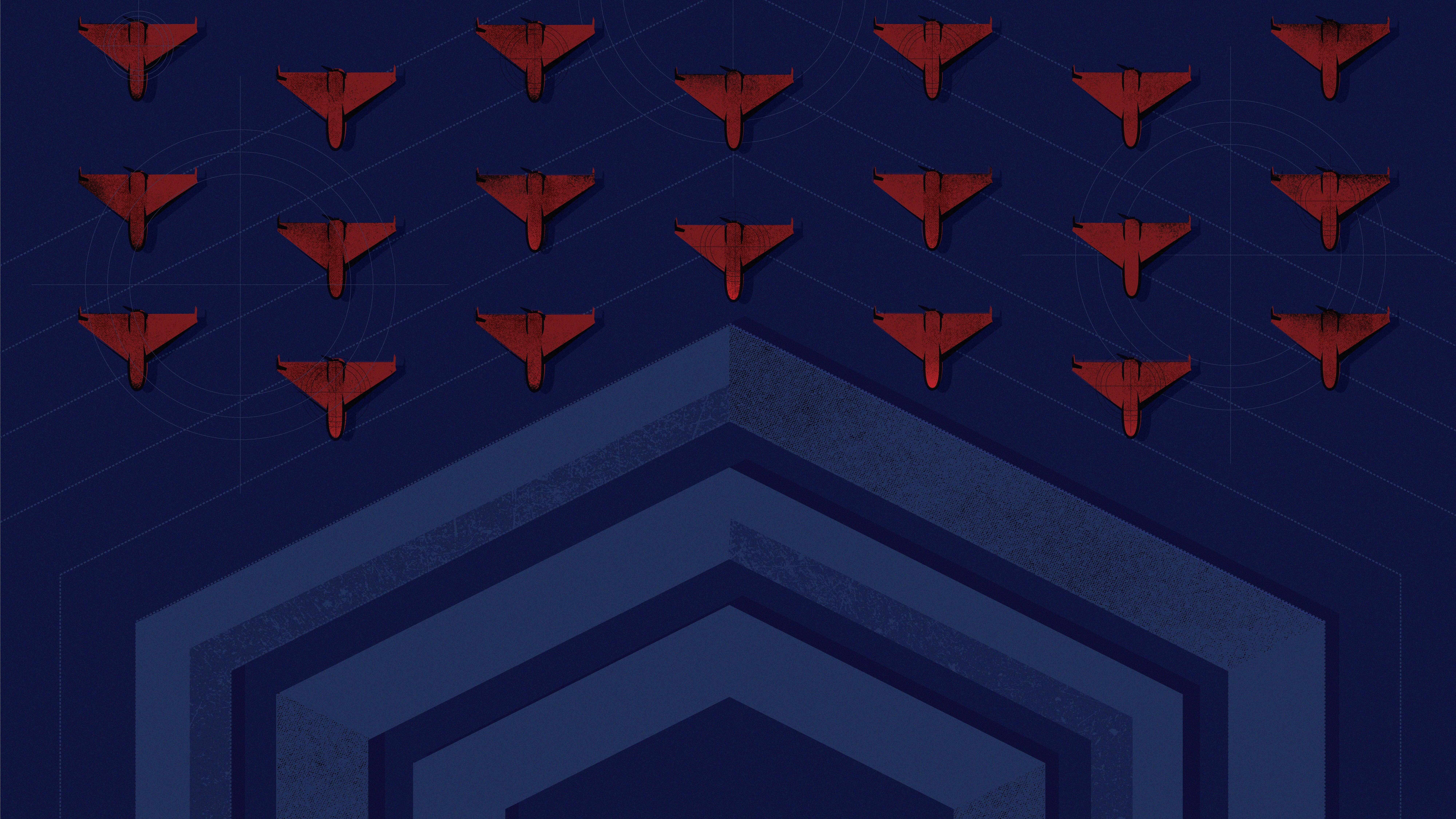
September 10, 2025
CNAS Report Finds U.S. Military Unprepared for Drone Threat
Washington, September 10, 2025—A new report released by the Center for a New American Security’s (CNAS) Defense Program finds that the United States is unprepared to defend against present and future drone threats that have eroded decades of American air dominance.
In Countering the Swarm: Protecting the Joint Force in the Drone Age, Stacie Pettyjohn and Molly Campbell parse a decade of defense spending, analyze recent combat operations in the Middle East, and highlight insights from a U.S.-China wargame. The authors call on the Department of Defense (DoD) to swiftly develop counter-drone capabilities or risk suffering significant losses in future conflicts.
The small drone threat is not new. Yet, after a decade of DoD investment in counter-uncrewed aerial systems (C-UAS) capabilities, the authors find that a lack of scale and urgency has left the United States vulnerable and unprepared.
The report concludes that while U.S. forces in the Middle East shot down most of the hundreds of inbound drones, they were facing a relatively modest threat with only a few drones fired at a time. Nevertheless, the small but sustained threat of one-way attack drones strained U.S. defenses. Oftentimes, U.S. troops had to employ missiles that cost hundreds of thousands or millions of dollars to intercept a $50,000 drone. This is not a cost-effective or sustainable approach against a larger drone threat.
America’s adversaries now produce millions of small, cheap drones. The authors find that in a hypothetical future conflict between the United States and China, China’s stocks of drones could threaten U.S. forces operating in the First Island Chain.
“Without deep magazines of substantially enhanced counter-drone capabilities, the United States risks having its distributed warfighting strategies overwhelmed by massed Chinese drone attacks, and the United States could lose a war over Taiwan,” the authors write.
To defend against the present drone threat, the report recommends that the Department of Defense:
- Builds resilient defenses with layered active defenses and passive countermeasures.
- Strengthens mobile counter-drone capabilities and tactics for maneuvering forces.
- Buys large stockpiles of high-volume, short-range kinetic interceptors.
To optimize the Department and America’s military for the drone threats of the future, the report recommends that the United States:
- Invests in AI-enabled processing of sensors and AI command and control to speed up C-UAS kill chains.
- Transitions promising and rapidly emerging technologies, especially high-power microwaves, to programs of record.
- Invests in high-resolution passive sensors.
The report additionally recommends adjustments to existing shot doctrine, encouraging the services to reserve their most expensive munitions for the most-pressing threats, eliminating cheap drones with short-range interceptors.
Drones already define modern battlefields. The authors call for the DoD to act with the urgency necessary to protect America’s forces.
For more information or to arrange an interview with the report’s authors, please contact Charles Horn at [email protected].

Countering the Swarm
After decades of air dominance and a near monopoly on precision strike, the United States now faces a dramatically different, more hostile world as the proliferation of cheap ...
Read More

